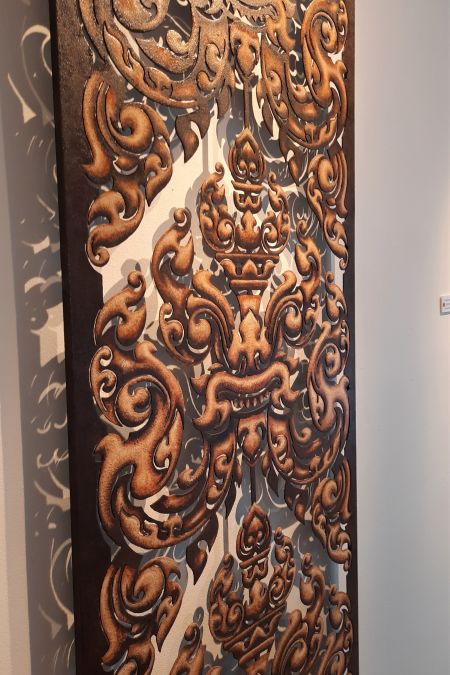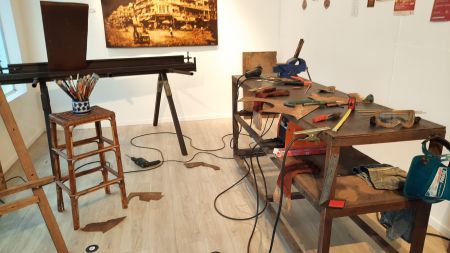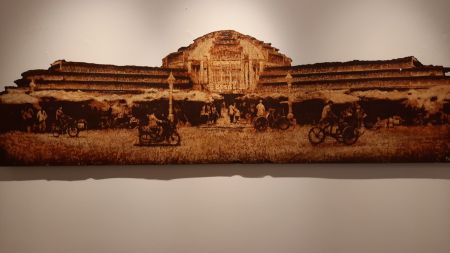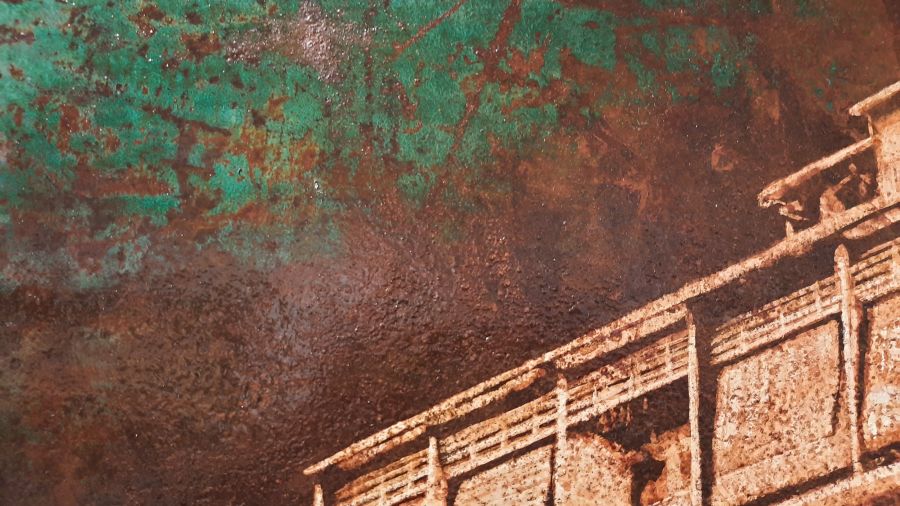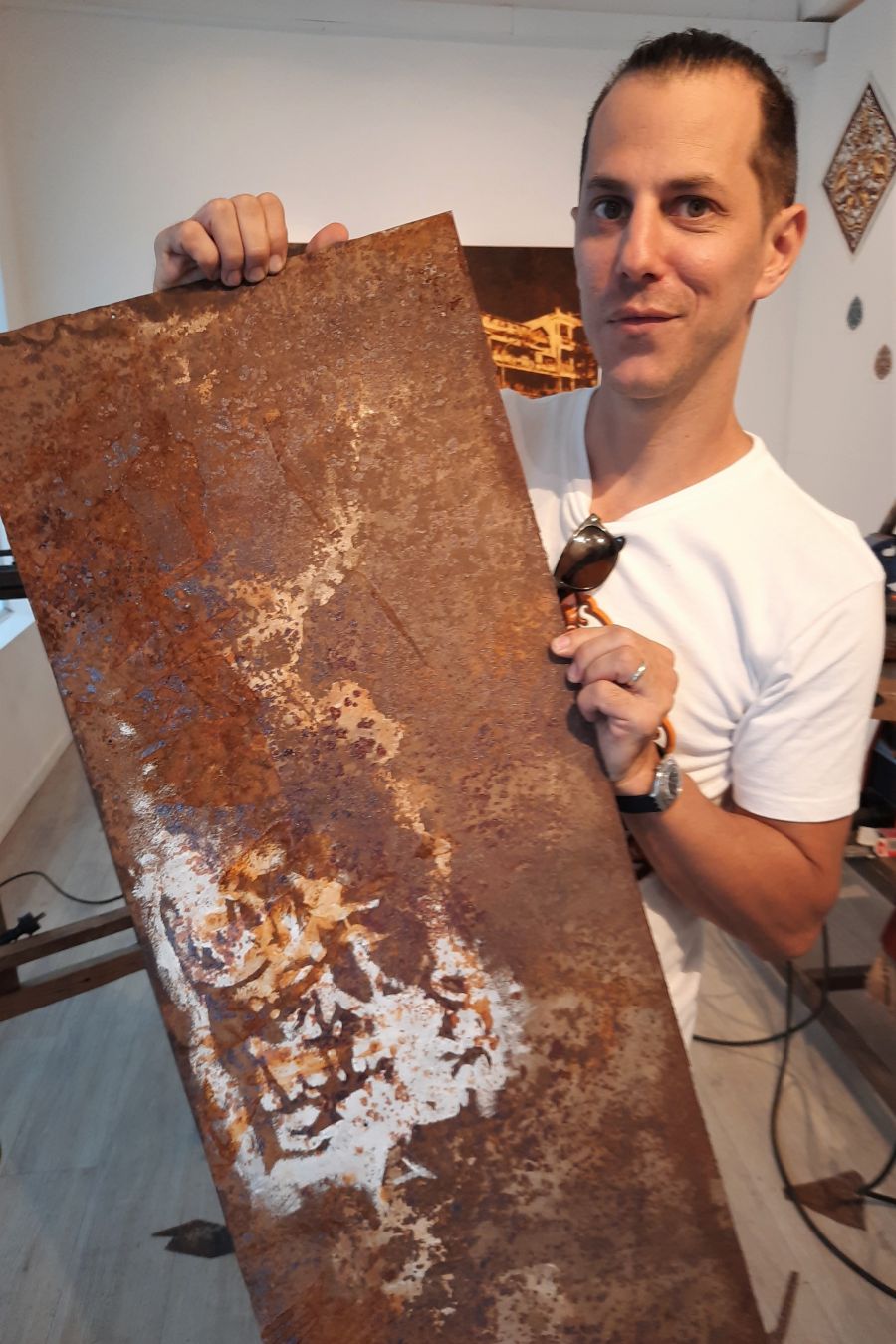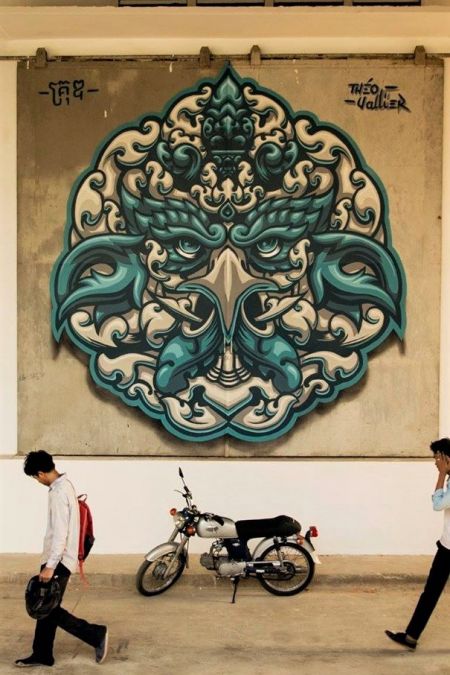
'Garuda' (គ្រុឌ) at Phnom Penh Factory
While art is forever on the move, forever developing, it is not so often than an entirely novel medium, an unprecedented technique, jump on the stage. This happened with urban artist Théo Vallier, happened 'to' him as he recalled it the day after the opening of his latest exhibition in Phnom Penh.
"I was still a young "tagger" in Marseilles when I noticed something interesting while passing by a metal door that had been paint-sprayed: rust was developing beneath the paint, and it was modifying its texture, its color, even the graffiti pattern. Two years later, after I had settled down in Cambodia in 2007, I remembered it and I decided to work on rust, with rust in fact."
A lengthy trial-and-error process led Theo to perfect the three-phase technique at the core of his current body of work: a first water soaking of the metal sheet (usually covered with a plastic film to hasten the rusting, with the irregular folds affecting the surface), followed by a fundating design in white pain, a second rusting period, more outlining, a third one, the addition of further drawn details, and then a final clear varnish coating ensuring that the completed artwork won't...keep rusting away. (watch the video below)
This is pure genius, yet the street artist who has graced many Phnom Penh walls with frescoes often inspired by the Khmer kbach patterns just reckons he "should patent it, maybe, yes", and on the other hand shares the whole process in a fascinating video screened at the exhibition. Because, well, there are so many other avenues to explore...
'Garuda' (គ្រុឌ) at Phnom Penh Factory
Openwork metal panel (with Grégory Gosselin)
While developing cut-out figures that stand by themselves, or chiseling elements that seem to literally escape from the flat picture - like the tuk-tuk at the right bottom of the artwork depicted here above -, Théo found out that his work pushed him towards "real 3-D creations, which simply means...sculpture. I'd also like to work on copper slabs, since rust creates effects and hues different from what happens with iron. And also, to better my skills in laser and hand cutting, which I've been working on with my friend Grégory Gosselin."
The artist's workshop,staged for Meta(L)morphose exhibition
Central Market, an artist view
The multifaceted Théo can be seen as a urban artist, a silversmith, a metal craftsman, and even a scrap collector since he has extensively worked on recovered metal sheets. This latter aspect brings another dimension to his creations: recovered pieces tend to be much thicker than new sheets ("and weighing a ton!", he adds laughingly), giving an extra density to the composition. And when they had been previously painted, the old coating may unexpectedly reappear after being "rusted", like in this particular case with this greenish shape surging on the Phnom Penh sky:
With these rusted metal paintings, the emblematic period buildings around Phnom Penh float over space and history with an almost elegiac intensity. Does this particular medium amplify the fleeting quality of the city of lore, a nostalgic Phnom Penh which, after surviving wars and purges, seems to inexorably fade away under the push of real-estate speculation and aggressive modernity?
"One can see it that way," remarks Théo Vallier, "but on the other hand I'm really tempted to start working on the brand-new buildings, too. A high-rise, super modern tower on rusted metal...that must be interesting." Perhaps because, after all, cities are not much more permanent than humans: ashes to ashes, dust to dust, rust to rust...
Painting on rusted metal (video by Dominique Tardy)
Meta(L)morphose (រចនាលោ:), exhibition at Phnom Penh French Institute until 22 Feb. 2020
